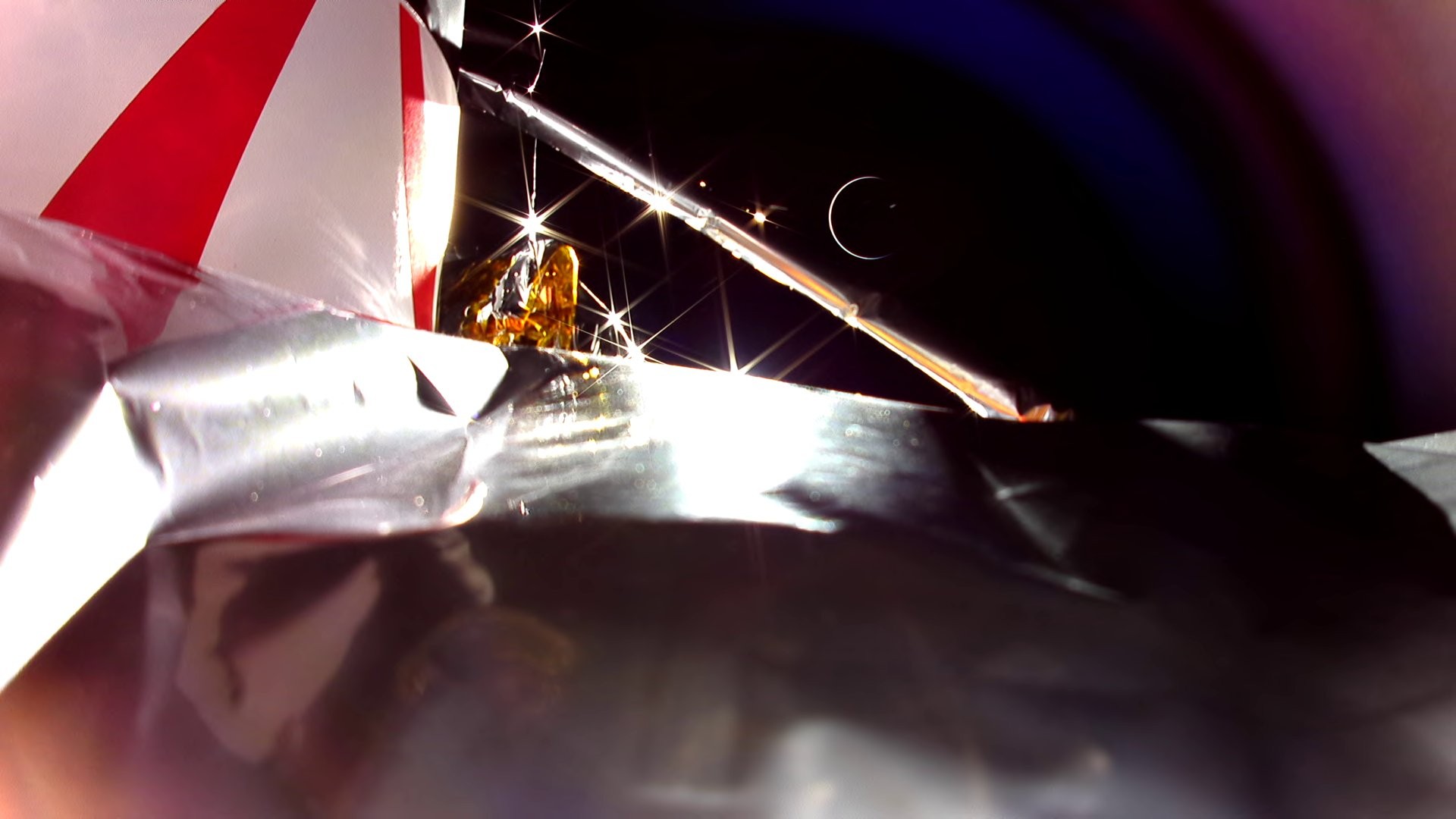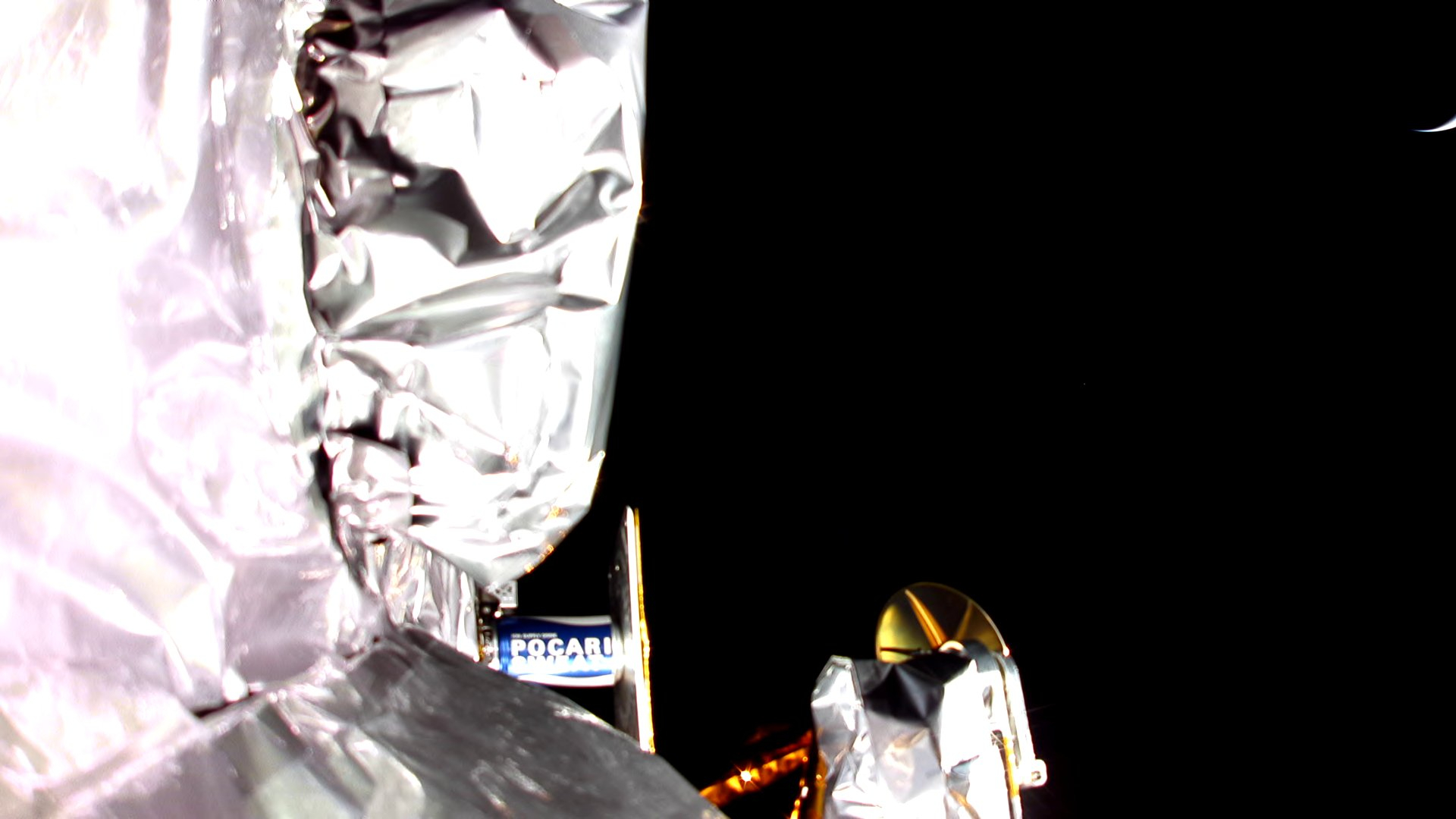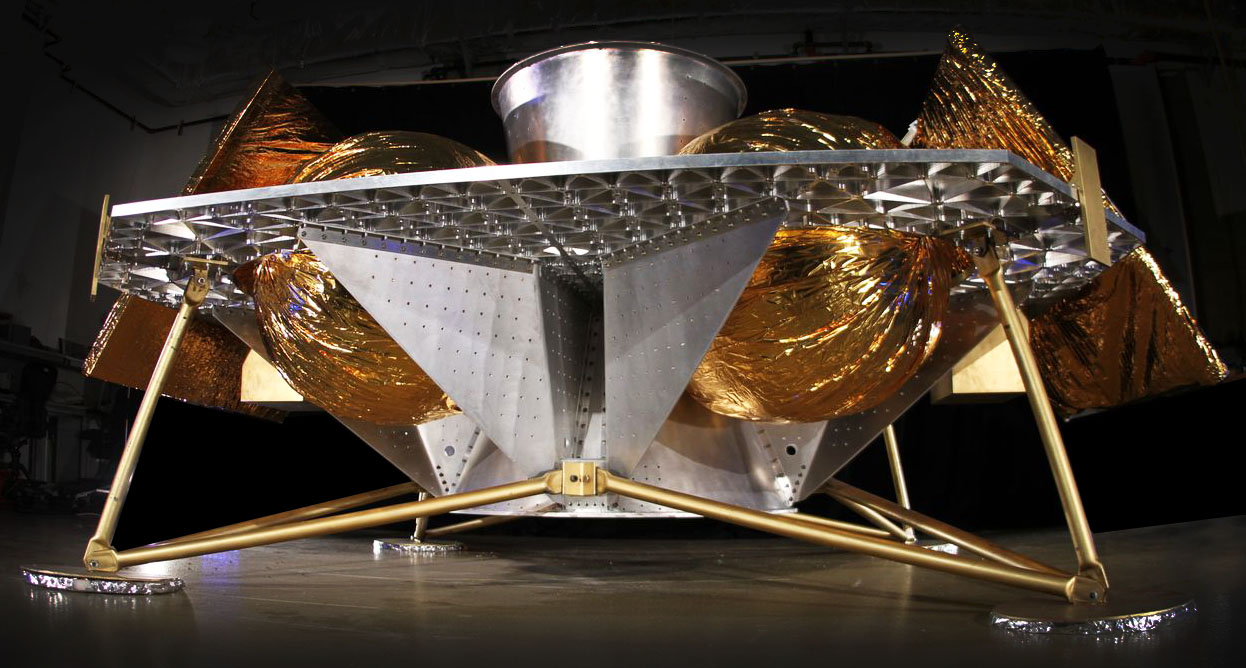We finally know why Astrobotic's private Peregrine moon lander failed

It has been about seven months since Peregrine, a silvery lander that shot for the moon, burned up over the Pacific ocean.
The mission was an unfortunate (and quite drawn out) failure. After launching on Jan. 8, Peregrine appeared to wander in space for over a week without getting too far, eventually turning back toward Earth and ending up on our planet in pieces. Moreover, this saga was especially tense because Peregrine was very important. It carried the weight of being the first contracted mission of NASA's commercial lunar payload program, it was the selected spacecraft to fly aboard the Vulcan Centaur rocket's maiden voyage, and it dutifully held experiments, art and bitcoin meant to find their final resting places on the moon.
So, since Peregrine's demise on Jan. 18, the lander's creators at Astrobotic Technology have been working on the mission's autopsy, commissioning 34 government, industry and in-house experts for the job. And on Tuesday (Aug. 27) they finally revealed the results. In short, it seems like Peregrine had a faulty pressure helium control valve. It's called PCV2.
According to Astrobotic's post-mission report, PCV2 experienced what's known as a "loss of seal capability" most likely due to (get ready for a mouthful) "a mechanical failure caused by vibration-initiated relaxation between threaded components internal to the valve."
"Think about a screw and a washer, and a threaded component," John Horack, who chaired the mission's investigative team and review board, told reporters on Tuesday (Aug. 27). "If you shake it sufficiently, you can get some mechanical configuration that will prevent the valve from sealing."
This had repercussions — the fact that PCV2 lost its sealing capability meant the thing it was supposed to seal wasn't properly sealed. Basically, PCV2 (and its counterpart PCV1, for that matter) controlled the flow of gaseous helium between different tanks. PCV1 took care of flow between the pressurant tank and the fuel tanks while PCV2 was in charge of flow between the pressurant tank and the oxidizer tanks. Thus, with PCV2 not working, it couldn't correctly regulate the helium flow it was assigned to.
"It's pretty much no different than when your sink starts to drip in your kitchen," Horack said. "Water gets through the seal and comes out the other side, but in this case, it's helium and it's high pressure, so it's much harder to confine."
Breaking space news, the latest updates on rocket launches, skywatching events and more!
Related: Private Peregrine moon lander failure won't stop NASA's ambitious commercial lunar program
Of note, Astrobotic's report mentions that PCV2 was a known risk on Peregrine. First of all, the company switched PCV suppliers in August of 2022, during the lander's construction — a change that came about because the original PCV components used to control helium pressure into the fuel and oxidizer tanks were "repeatedly failing." However, after that switch and after the new supplier's PCVs were installed, the new PCV1 encountered leaks during testing as well.
The team was able to remedy that PCV1 issue pretty quickly because PCV1 was in an easily accessible area of the spacecraft — but PCV2 wasn't double checked. This is partly because it didn't fail during testing, and partly because it was located deep within the craft. "To do repairs or replace it would have required extensive surgery on the spacecraft to take out key elements — large elements — of the spacecraft, which would have invalidated the acceptance testing that we had just completed," Sharad Bhaskaran, Peregrine's mission director, said during the conference. "And these are very time consuming and expensive tests."
"That, along with the risk of doing damage if we had de-integrated and reassembled the spacecraft, led us to the conclusion that it was best to proceed to the next stage of the program, and not to replace PCV2, and to proceed to flight," Bhaskaran added.
Play-by-play
In order to reach this conclusion as a whole, the team used an extra valve to model PCV2 in a controlled environment, then forced that valve to undergo similar conditions PCV2 endured during its journey in space. For instance, the PCV2 replica was subjected to shocks, vibrations and pressurized cycling on the ground. Then, the team measured what kind of leaks the tossed-around model would provoke — indeed, the leak rate identified was "roughly equivalent" to what Peregrine presented.
"After a moderate, small number of cycles, the valve leaked, and you could hear it leak from about four feet away," Horack said.
Furthermore, the report states that "subsequent disassembly of the valve showed that a threaded joint in the valve was loosened, and that the primary seating O-ring in the valve had been damaged along the sealing surface."
That conclusion also allowed the review board to build a sort of play-by-play account of Peregrine's short life.
The report explains that, after launch, everything looked great. After separation, everything still looked great. The issue seemed to specifically happen after PCV1 and PCV2 were actuated. PCV1 went first, worked well, then shut off as planned. PCV2, however, showed signs of error during shutoff.
"Telemetry showed a continued and uncontrolled rise of pressure in the oxidizer tanks downstream of PCV2 and also a decrease of pressure in the helium tank," the report states.
Less than 90 seconds later, a maximum was reached. Then, operators adjusted Peregrine's trajectory to a sun-pointing position as planned (to charge up its solar panels), only to witness an unexpected attitude change. PCV2's failure had forced an oxidizer tank to rupture, which applied an external torque to the spacecraft. There were three fruitless attempts to fix the issue at the time but, even when closed, PCV2 was leaking internally. At that point, the team just had to ride the wave.
"I think the decisions that were made at each point in time were sound engineering decisions and sound programmatic decisions," Horack said. "If you're going to ask me what I wish we had, I wish we had a more robust design of the valve."
After about two hours, the leak calmed down — but Peregrine was already far gone. Soon, the team managed to retrieve an image captured by one of the lander's cameras that showed some of its insulation all puffed up. "This provided the first visual evidence of the anomaly by showing a displacement in the MLI thermal blankets that were wrapped around the lander and supported the hypothesis of a ruptured oxidizer tank," the report says.
At this point, operators made a maneuver to get the craft to point at the sun as soon as possible because its batteries had started to deplete. That worked. So, the team tried continuing with the plan of bringing Peregrine — hobbled or not — to the moon. That did not work, mostly because it was super hard to maneuver the spacecraft post-leak.
Landing was no longer a possibility, and operators began searching for a silver lining by purging the spacecraft of all data possible so they can make sure this doesn't happen again.
"I'll say our mission operations team learned the hard way — well, on the fly — and they're very experienced now on how to fly that spacecraft in cislunar space, even with an anomalous condition." Steve Clark, Vice President of Landers & Spacecraft at Astrobotic, said during the conference. "The team is well-seasoned now."
And there's a reason to look ahead.
This isn't the end
The team is planning for its upcoming lunar lander, known as Griffin, slated to launch by the end of 2025 aboard a SpaceX Falcon Heavy and land at the lunar south pole. "We've actually improved the reliability of the propulsion system on Griffin," Clark said, citing things like larger tanks and a longer feed system because it's a larger lander.
"If that valve were to fail the same way as Peregrine Mission One, there is a backup system that would be able to control the helium," John Thornton, CEO of Astrobotic said during the conference.
For instance, he explained, there's a latching valve the team added as well as some extra support from a helium pressure regulator. "It is slightly different than the actual valve that flew on Peregrine," Clark said. "Same vendor, but we've worked closely with them to redesign the internal workings."
And, though Griffin won't have the opportunity to become the first commercial lander to touch down on the moon — Intuitive Machines' Odysseus lander won the title shortly after Peregrine met its end — it will be an important notch in the timeline of commercial moon projects as a whole.
As for Peregrine? Well, an aspect of this story the team is sure to highlight is how Peregrine Mission One was part of NASA's Commercial Lunar Payload Services program, or CLPS. The whole purpose of CLPS is to create a market in which companies can build lunar landers at relatively lower costs, then NASA (and anyone else) can pay to put stuff on that lander. So, all in all, Peregrine's budget wasn't terrible. It was about $100 million, for context, which is a lot, but pretty modest for the space exploration world. Consider the James Webb Space Telescope, a $10 billion observatory currently locked into position on the side of Earth that never faces the sun.
"If, heaven forbid, the James Webb Space Telescope did not deploy, we really would be stuck," Jack Burns, a professor emeritus in the Department of Astrophysical and Planetary Sciences and in the Department of Physics at the University of Colorado, Boulder previously told me.
NASA's commercial moon program technically allows for some flexibility. "The idea behind the CLPS program is for rapid acquisition and delivery of services," Burns had said.
"One interesting scenario that we're looking at — because it's now proven as a spacecraft in this space — is the potential for using it as a tug or using it as an alternate spacecraft bus," Thornton said. "It's quite capable. It flew 10 and a half days in space; avionics work; batteries work; solar panels work; comms work; the basics, all work — other than that valve failure."
"Sometimes hardware just fails," Horack said. "Sometimes, I think stuff just breaks."

Monisha Ravisetti is Space.com's Astronomy Editor. She covers black holes, star explosions, gravitational waves, exoplanet discoveries and other enigmas hidden across the fabric of space and time. Previously, she was a science writer at CNET, and before that, reported for The Academic Times. Prior to becoming a writer, she was an immunology researcher at Weill Cornell Medical Center in New York. She graduated from New York University in 2018 with a B.A. in philosophy, physics and chemistry. She spends too much time playing online chess. Her favorite planet is Earth.


